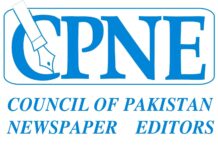The covid-19 pandemic posed extraordinary challenges to Pakistan, profoundly affecting numerous sectors, with education being among the hardest hit. The first confirmed case surfaced on 26 February 2020, and multiple waves of the virus followed over the ensuing years. By May 2023, Pakistan had reported approximately 1.58 million cases and over 30,000 fatalities, leading to widespread disruptions in daily life.
As a containment measure, the government mandated nationwide school closures, severely impacting millions of children. These closures varied across provinces, cumulatively resulting in around 10.5 months of lost in-person learning, affecting nearly 40 million students. Gradual reopening, subject to stringent health protocols, was implemented in phases depending on the severity of the outbreak in each region.
Pakistan’s education sector has suffered immensely due to the covid-19 pandemic, but with sound policies and unwavering commitment, the country can recuperate from these setbacks. The focus must now be on ensuring that every child deprived of education during this period is reintegrated into the school system, safeguarding the future of millions of students and the nation as a whole
According to the Pakistan Bureau of Statistics and independent education surveys, approximately 22.8 million children were already out of school before the pandemic. This crisis exacerbated the situation, as many children— particularly from underprivileged backgrounds— failed to return to school post-pandemic.
Punjab experienced extended school closures, and studies indicate that 8 percent of adolescent girls and 21 percent of boys did not resume their education after reopening. Economic hardships compelled many boys to seek employment, while traditional societal norms increased household responsibilities for girls. Although 70 percent of students resumed studies, nearly 1.8 million, especially in rural areas, remained out of school. The situation in Sindh was equally severe, with limited access to digital learning resources aggravating the crisis. Remote learning initiatives were introduced, but many students lacked internet access, devices, or an environment conducive to learning, leading to considerable learning losses. Over two million children in Sindh dropped out due to economic difficulties and their families’ inability to afford schooling.
In Khyber Pakhtunkhwa, the educational impact was profound. Schools remained closed for prolonged periods, and students struggled with online education due to inadequate digital infrastructure. Reports suggested that many children, particularly in rural areas, found it difficult to resume their studies after the pandemic. Khyber Pakhtunkhwa managed a relatively better return rate of around 75 percent, yet dropout rates in the tribal districts remained high due to inadequate digital learning facilities and displacement issues. The scenario in Balochistan was even more dire. The province already had the lowest literacy rates and poorest school attendance before covid-19, and the pandemic exacerbated these challenges. High dropout rates were observed across all educational levels due to limited access to technology, economic hardships, and insufficient government support. Only about 60 percent of students resumed schooling, leaving a substantial gap in learning continuity.
Several factors contributed to children not returning to school after the pandemic. The economic downturn resulting from covid-19 forced many families to prioritize earning livelihoods over education. In lower-income households, children were compelled to contribute to family income. Girls were disproportionately affected, with many forced into early marriages or household duties. Additionally, the absence of proper reintegration strategies— such as financial assistance, counseling, and flexible academic calendars— led to permanent dropout rates affecting thousands of students. Another major issue was the reliance on online education, which left millions of students behind due to the digital divide. Statistics indicate that only 36 percent of households in Pakistan had internet access during the pandemic.
At the governmental level, various measures were undertaken to mitigate the educational crisis. The Ministry of Education launched the TeleSchool initiative, offering televised lessons to students nationwide. Additionally, provincial governments introduced hybrid learning programmes, with Punjab implementing the Taleem Ghar project and Sindh launching online classes through dedicated portals. However, these initiatives had limited success due to infrastructural challenges and low digital literacy among students and teachers. In response to increasing dropout rates, the government initiated enrollment drives and provided financial incentives such as scholarships and stipends, particularly targeting girls and low-income families. Despite these efforts, the recovery process remains slow, and a significant portion of students have yet to return to formal education.
Education holds a revered status in Islam, is recognized as a fundamental right and as a crucial tool for personal and societal development. The Quran emphasizes the significance of knowledge in Surah Al-Alaq (96:1-5): “Read in the name of your Lord who created; He created man from a clinging form. Read, and your Lord is the Most Generous, who taught by the pen, taught man what he did not know.” This verse underscores the divine command to acquire knowledge.
The Prophet Muhammad (peace be upon him) also stressed education’s importance, stating, “Seeking knowledge is an obligation upon every Muslim” (Sunan Ibn Majah, 224). Furthermore, he emphasized continuous learning by declaring, “The best among you are those who learn the Quran and teach it” (Sahih al-Bukhari, 5027). Islam promotes both religious and worldly education for the betterment of society.
To recover from the educational setbacks inflicted by covid-19, a comprehensive strategy is imperative. First, enhancing school infrastructure and digital learning accessibility across all provinces is essential. The government must invest in expanding internet coverage, providing affordable digital devices, and training teachers in modern pedagogical techniques. A particular emphasis should be placed on girls’ education by introducing community-based schools and financial aid programs to prevent further dropouts. Furthermore, policymakers should implement flexible learning models, including evening classes, bridge courses, and accelerated learning programs, to accommodate students who have fallen behind. Strengthening collaboration between the government, NGOs, and international organizations can further bridge the education gap through targeted interventions for the most affected areas.
Pakistan’s education sector has suffered immensely due to the covid-19 pandemic, but with sound policies and unwavering commitment, the country can recuperate from these setbacks. The focus must now be on ensuring that every child deprived of education during this period is reintegrated into the school system, safeguarding the future of millions of students and the nation as a whole.






















